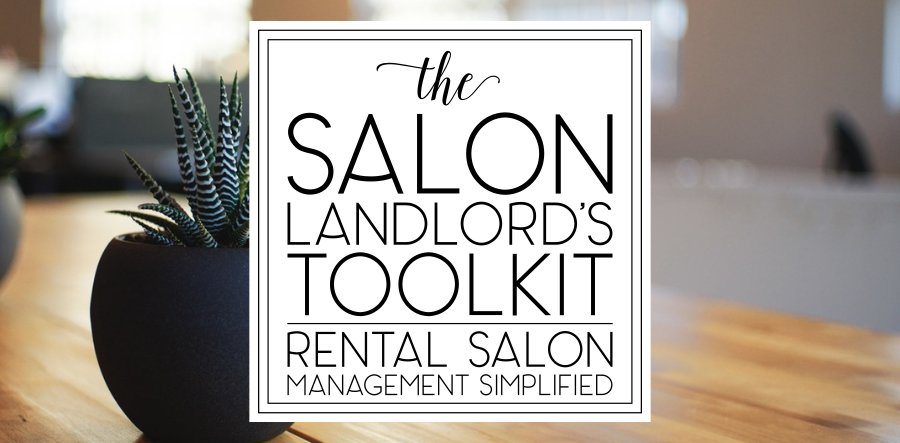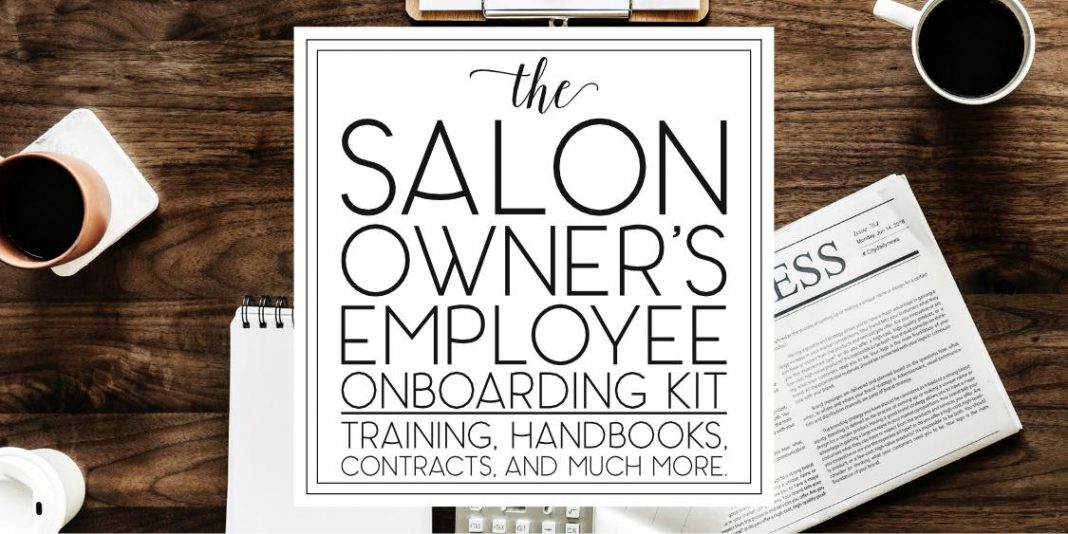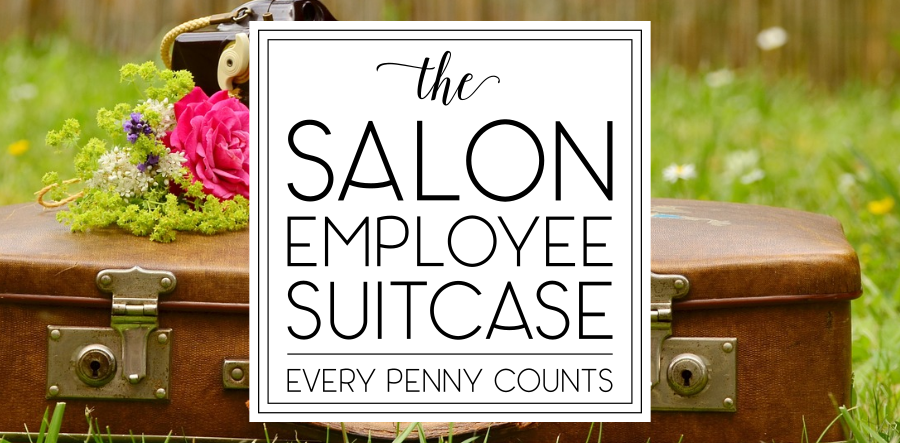After the recent NYT investigation revealed the plight of exploited nail salon workers, consumers have leaped in front of news crews, with large eyes and shocked expressions. “I just can’t believe these atrocities are going on in our country! We have to do something to stop these human rights violations!”
Who are these consumers to be so outraged?
The same clients who throw tantrums over $2 price increases.
The same clients who threaten to go to “the place down the street” when we refuse to match their unsustainable prices.
The same clients who expect us to replicate two hours of intricate Pinterest nail art for $5.
The same clients who complain about “rushed” services and “dirty” salons, but balk at the price of a quality service performed by licensed professionals.
We know who “they” are because we’re nail technicians–and you aren’t fooling us.
You have the audacity to preach about how consumers need to become more “socially conscious,” but how can you hope to accomplish social consciousness when for so long you have been so conveniently, selectively ignorant?
Did you really think that anyone was making a liveable wage from your $25 mani/pedi combo? If you’re that deficient in common sense, nothing short of a miracle will bestow upon you the intellectual capacity required to achieve “social consciousness.”
Since, apparently, these recently enlightened clients aren’t capable of doing basic math, we’ll outline the CPS (cost per service) in two different NYC salon scenarios, because ignorant comments like THIS ONE (“A $25 manicure-pedicure is above minimum wage in America.”) need to be addressed by people who actually work in this industry.
First things first: The price you’re being charged is NOT what your manicurist is being paid. In the opinion article linked above, author Diana Furchtgott-Roth seems to believe that by simply moving to a salon that charges more for services, a manicurist is capable of earning substantially more money per service. Does she not recognize that business owners must cover operating expenses, product costs, tools and labor? Unless your nail technician is a self-employed booth renter, the money you pay them is not what they receive–even then, renters cover their own cost-of-doing-business expenses entirely.
In any case, these commentators should stop sharing their severely misinformed opinions.
Discount Salon Scenario
Before evaluating the finances, let’s assume this typical discount salon:
• reuses disposable items
• does not use gloves
• does not disinfect tools or pedicure equipment
• uses the cheapest products available
• only accepts cash payments
• intentionally mis-classifies employees as “independent contractors”
This discount salon charges $25 for a manicure and pedicure (a “generous” amount based on the availability of even cheaper services) and manicurists are expected to really hustle to complete both services within 60 minutes.
For the purpose of this discussion, let’s pretend that this salon violates all federal and state labor laws, as many do willfully, with the exception of paying minimum wage. That is, the salon owner pays the manicurist directly in cash, without accounting for overtime, reporting wages, deducting employment taxes or contributing to it–which is all illegal. In labor alone, the salon owner would be paying $8.75 (minimum wage for New York) for the hour worked.
TOTAL MANI/PEDI PRICE: $25.00
PAYROLL COST: $8.75 (35% of gross sale)
SALON CUT BEFORE OVERHEAD: $16.25
Located in Greenwich Village, this salon has 900 square feet, four pedicure chairs and four manicure stations and costs $5,560 per month (actual price for an actual salon, by the way). It’s open Monday-Saturday from 9am-7pm, making the operation cost $21.38 per hour. So let’s work some more math here.
SALON CUT BEFORE OVERHEAD: $16.25
OPERATION COST PER HOUR: $21.38
SALON CUT BEFORE PRODUCT EXPENSES: -$5.13
The salon operates at a substantial loss before we even account for product, but let’s explore these numbers a little. After all, we don’t expect this client is the only one being serviced during the hour, so we’ll just account for the cost of her individual real estate by dividing the hourly operation cost by the number of workstations.
SALON CUT BEFORE OVERHEAD: $16.25
OPERATION COST FOR ONE WORKSTATION PER HOUR: $5.35
SALON CUT BEFORE PRODUCT EXPENSES: $10.90
In a traditional discount salon mani/pedi service (where disposables are often reused and personal protective equipment like gloves aren’t used at all), the only product expenses are consumable products. After simplifying the product list (no pedicure soak or callus softener), we found the following to be the least expensive:
SpaRedi Scrub [5 gallons] $69.95 ($0.11 per ounce)
ProNail Manicure Lotions, Case [4 gallons]: $29.85 ($0.06 per ounce)
The frugal technician will use one ounce of scrub and a half ounce of lotion ($0.14 total) in a discount manicure service, and one ounce of scrub and 2 ounces of lotion ($0.23 total) in a discount pedicure service. Other consumables like cuticle remover, cuticle oil, acetone and polish are so cheap on a per-service basis that it would be far too tedious to calculate the exact amounts, so we’ll just say together it equates to $0.10. These are obscenely low CPS costs (intentionally unrealistic).
SALON CUT AFTER PRODUCT EXPENSES: $10.43
That looks reasonable and sustainable, right?
Wrong.
We did not account for the:
• time and product(s) needed to clean tools and equipment
• original investment in tools and equipment
• laundering or replacement of soiled towels (standard terry or paper)
• disposables that should be single-use (files, buffers, orangewood sticks, etc.)
• professional or general liability insurance
• worker’s compensation insurance
• business/professional licensing fees
• standard hourly employment tax ($1.02) or taxed overtime pay ($5.38)
• utilities (not included in the rent and likely substantial, particularly during winter).
By the time those expenses have been included, that $10.43 evaporates into a deficit.
Assuming this manicurist works every operating hour the salon is open (60 per week), is being compensated the minimum wage, is consistently booked 75% of the time doing $25 mani/pedi combos and receives a 15% tip from every single client (intentionally being generous here), her weekly gross pay comes to $693.75. (If overtime pay were included and all taxes deducted as required by law, her net pay would be $561.16 per week.) This also assumes that the salon owner is not charging any arbitrary fees or fines, or stealing any tips, both illegal, yet common practices.
Anyone in this industry will testify that there is absolutely no guarantee that you will have a client in your chair for every hour you’re at work. Even in the busiest salons, 75-90% productivity is about the best you can hope for, and maintaining that rate requires constant advertising and internal marketing, which none of these discount salons are doing. This booking rate and the service price that the tip amount is based on are inflated. Even with all the padding and generous overestimating, it doesn’t compute.
If we use these same numbers and evaluate the situation in an exploitative arrangement, whereby the employees are only paid a flat daily rate of $10 per day and the owner is stealing tips, the $25 mani/pedi makes more sense.
With four hyper-efficient manicurists booked at the same rate (75%) and working the same amount of hours (performing 720 mani/pedi packages each month at $25 each), that comes to $18,000 monthly in gross sales and $2,700 in tips–$20,700 total. Once their $10 per day is deducted ($960) and the rent ($5,560), that leaves the salon owner with $14,180 each month–$170,160 annually. As far as discount salons go, this would be considered a small scale operation with only four technicians. If this salon employed 8-12 technicians, owner income could double or triple.
Many discount salons do not carry the burden of a $5,000+ rent, so you can see how in areas that aren’t NYC, the income from these establishments under an exploitative arrangement could be substantial.
We should not be praising exploitative salon owners for providing work opportunities for immigrants any more than we would praise pimps for providing protection and work opportunities to women.
Legal Salon Scenario
We’ll consider the same salon space, but unlike the discount salon, it operates ethically and does not exploit its workers in any way. This salon:
• properly classifies employees for tax purposes and complies with tax and labor law
• distributes tips in full and reports tips as income
• does not reuse disposable items
• requires its employees wear gloves for every appointment
• disinfects tools and pedicure stations
• uses quality products
• accepts all methods of payment, even those with merchant fees
In this salon, manicurists are given 90 minutes to complete both services. For that amount of time, the salon owner would be required to pay at least $13.12 in payroll, plus the required portion of the technician’s employment tax (7.65%). This would come to $14.12 per manicure/pedicure combo service performed. Operating costs for 90 minutes would equal $7.88 (for the single workstation being occupied).
Before product costs, the owner must collect at least $22. Let’s calculate those costs. This salon owner uses LaPalm products, a brand that performs well for the price:
LaPalm Pedicure Scrub [5 gallon]: $109.99 ($0.17 per ounce)
LaPalm Lotion [1 gallon]: $14.99 ($0.12 per ounce)
LaPalm Callus Remover [1 gallon]: $44.99 ($0.35 per ounce)
A technician would use ¾ ounce of scrub ($0.12) and ¾ ounce of lotion ($0.08) for the manicure and 1 ounce of scrub ($0.17), 2 ounces of lotion ($0.24), and ½ ounce of callus remover ($0.17) for the pedicure ($0.78 for both).
We’ll also calculate the costs of disposables because they are not being reused in this salon:
Mini Nail Files Bulk [1000 count]: $99.95 ($0.10 ea.)
Mini Buffers Bulk [1500 count]: $89.95 ($0.06 ea.)
Nitrile Gloves Bulk [1000 count]: $25.23 ($0.05 pr.)
Toe Separators Bulk [1440 count]: $99.95 ($0.14 pr.)
In these disposables alone (excluding disposable slippers), the cost for both services is $0.35 (if using only one file and buffer for both); when added to the LaPalm product cost and the previously estimated $0.10 for additional consumable products, the total is $1.13. (Salon owners, we can discuss how to lower your CPS to this level in another post.)
LABOR COSTS: $14.12
OPERATING COST: $7.88
MATERIAL COST: $1.13
TOTAL EXPENSE: $23.13
So, the ethical salon owner must charge at least $23.13 for a manicure/pedicure combo to break even. This is the bare minimum a budget-conscious salon owner operating properly in this location can charge. This excludes the cost of other expenses like utilities, merchant service fees, profit for the business or a salary for the salon owner. We’re not accounting for the cost of salon equipment, such as the pedicure chairs themselves, which range in price from $3,000-10,000 each and have an average lifespan of 4-7 years ($750-$1400+ per year of ownership). We’re also not counting the monetary and productivity cost of proper disinfection.
Are you starting to realize how ridiculous those $25 combos are, and how supremely stupid you sound when you act so surprised to learn the manicurists sitting across from you are being exploited?
Now that you’ve been confronted with the actual cost of nail services, perhaps now we should conduct an investigation into the apparent epidemic of mass delusion, where seemingly rational adult consumers are incapable of deductive reasoning when ignorance presents them with a financial benefit.
Many traditional (non-discount) salon owners compensate workers on a circumstantially legal “commission-only” basis, whereby the employee is paid a percentage of gross sales–or nothing at all. These percentages range from 30-50% in most salons. An overwhelming majority of salon owners utilizing this system do not comply with minimum wage or overtime laws. Additionally, workers in all beauty industry professions–including hair stylists, makeup artists and estheticians–are generally classified as “independent contractors,” while being treated as employees. Employers do this to avoid paying employment taxes and overtime. To attempt to protect themselves, they require misclassified employees to register as business entities. This also allows them to burden their “self-employed” employees with cost-of-doing-business expenses, such as product, and fine them for “re-dos,” arriving to work late, and other arbitrary infractions. Since most consumers don’t realize this, we evaluated each salon under the consumer’s assumption that the salon owners pay minimum wage.
About Tina
Licensed cosmetologist and beauty industry advocate, Tina Alberino is a trusted resource, providing a wealth of information and personalized advice. Tina’s extensive consulting experience informs her writing, available on her blog, This Ugly Beauty Business, and in a feature column in the Stylist newspapers. Her first book, The Beauty Industry Survival Guide, delivers relevant content in the bold and brazen style that has become Tina’s trademark. Areas of expertise include employment law, tax law, ethical salon management practices and professional development.
About Jaime
Celebrating more than 20 years in the nail industry, Jaime Schrabeck, Ph.D. works as a licensed manicurist and owner of Precision Nails, an exclusive nails-only salon in Carmel, California. Beyond the salon, she serves as Competition Director for Global Beauty Masters, collaborates with Tina Alberino on Nail Tech Reality Check, writes savvy articles, consults with leading manufacturers and other salon owners/manicurists and advises California’s Board of Barbering and Cosmetology.









17 Responses
I was wondering if youhave any such information on low cost was centers like ultra wax. Thanks for the breakdown in this article. There is all sorts of crazy things I hear from other techs in the Industr. I’mglad I work for myself!
Waxing businesses are extremely lucrative because their margins are HUGE. The product overhead per service equates to pennies, but the markup is substantial. I’d love to do a breakdown of one, but I’ll need more information (specific product lines, protocols, whether or not they’re double-dipping, etc.).
THANK YOU!!!!!! This is amazing! I am shocked at how some of these places can do business & give us a bad name.
You have done it again, Tina and Jamie! This blew me away how everything was broken down to the penny. I enjoy getting a peek inside your brain, Tina 🙂 Thank you for such a great article. I will be sharing this on my business page.
We’re glad you liked it! Thank you so much!
I have been a licensed manicurist for 34 years and I have done everything legal . I will never be a millionaire but I am legal !!!! This is so unfair and not American we need to fix this and get our industry back asap !!!!
LOVE IT!!!
This is exactly the kind of information the internet was created to disseminate. Does anyone know if someone has already done one of these for the hair industry? My searching turned up nothing. I have never understood the outrageous disparity in pricing the hair industry (which I am in & have been in for the last 8 years) & how clients justify one thing vs. another. Realizing the location of a business plays a huge part in terms of cost to run a business, I remain fascinated by the amount of money a customer would pay for extremely temporary things, like extensions or an updo, but they nickle & dime color or cuts because they “grow out” or “don’t last as long”. I beg to differ on a regular basis, for a multitude of reasons, but mostly with consideration that a bad hair color or cut can cost the client – at the very least – years of a poor self image vs. the undeniable fact that extensions – even done well – will eventually fall out of the hair & rip the hair out in the process. I try to focus on my personal services & kind of dismiss it as much as possible, but the more I am exposed to a client not getting it the more hungry for a fix I become. I suppose my philosophy has always been “have more clients/make more money”, but I almost feel as though I’m fighting against my own industry & the egos that keep people “working smarter, not harder”, as if smart & hard are mutually exclusive.
You are absolutely right, and a lot of professionals falsely believed that “more clients=more money,” but often, that isn’t the case–especially when pricing isn’t set to properly cover overhead expenses. One of the things Jaime and I teach in our “Salon Fail” workshop is that “busy” does not mean “successful.” “Smart” and “hard” aren’t mutually exclusive–they’re mutually necessary to be successful in this business.
Hi Tina do you recommend that someone open a nail salon? I’m currently wanting to open one and is this a good profitable business I live in Tampa fla and if I decide to go forward I will be a owner I just don’t know how to break down the pay where the employees are happy and I still cover overhead & make a profit ?
I live in Tampa also (in Wesley Chapel, actually, but I deal with a lot of owners in Tampa), and I can tell you, it’s an incredibly oversaturated market, so it won’t be easy. They are literally drowning in competition. Some areas (Armenia and Waters, for example) are so densely packed with salons there is one in every strip all the way down the street. (That’s not an exaggeration. Drive around and keep your eyes open and you’ll be blown away by just how freaking many there are.) If you were in a less fierce area, I’d recommend spending a year getting educated on legal compliance and compensation and then starting small with a 1,000 or 1,200 sqft unit, but in Tampa? I seriously can’t recommend that. Areas around Tampa are better, though. For example, the New Tampa area doesn’t have much in the way of competition. However, staffing remains a huge challenge here, despite the high number of licensees. So, I wouldn’t recommend anyone attempt ownership unless they’re established and technically competent, so they can a.) step in if they lose staff, and b.) train people themselves.
Oh, before I forget, you may also want to read this post.
Customer is always looking for bargain price. I hardly to please them to that price. This industry became more difficult to operate at low cost this day and keep competitive price at the same time.
The answer is to stop being competitive with your prices, and start being competitive in the quality of service you offer. We can’t afford to operate at a loss, and since our services are “luxuries,” only people who can afford to pay what they’re worth should be enjoying them. Bargain customers are customers who aren’t worth having, in my experience.
Tina, this is incredible. Thank you.
Love this!!! This is something every consumer should read. I appreciate all the information you share. Waiting to read your next book.
Thank you Tina!